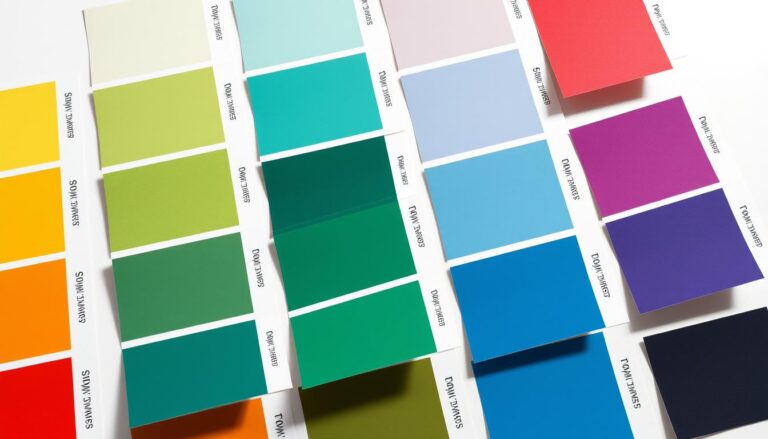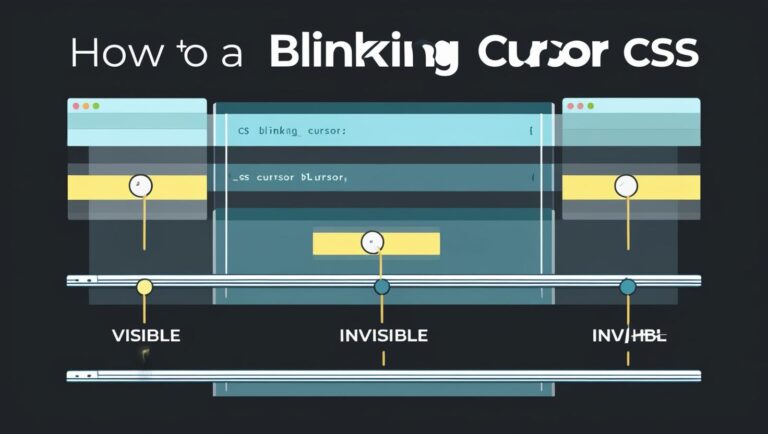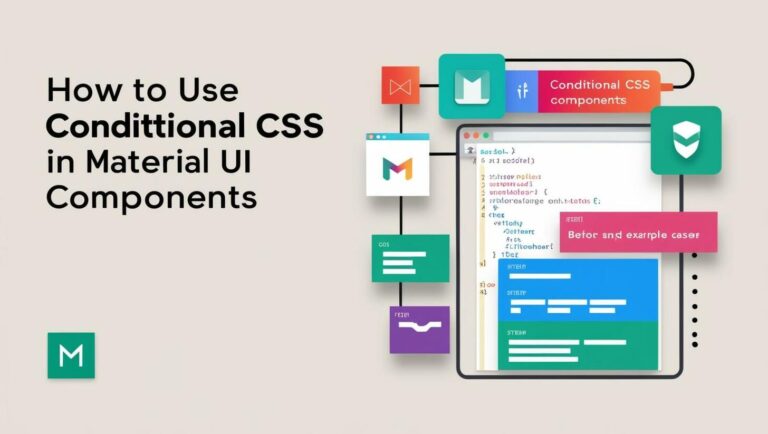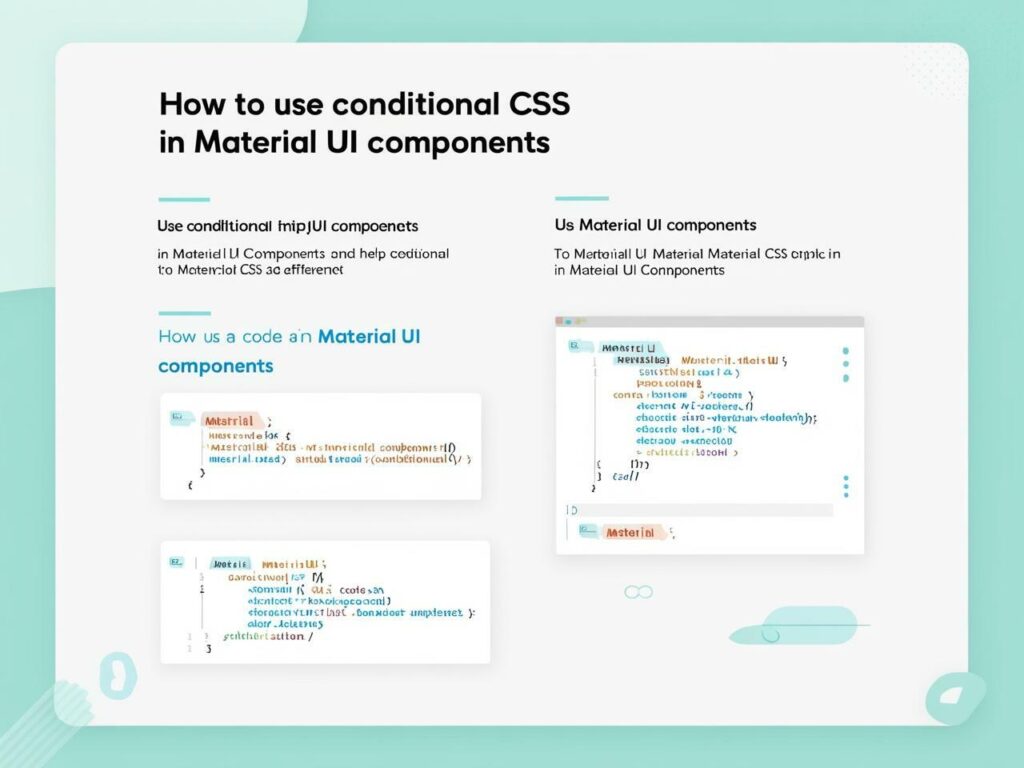In web design, a well-structured color palette is essential for creating visually appealing and consistent user interfaces. Tailwind’s default system offers a carefully crafted range of shades, making it easier for developers to maintain design harmony.
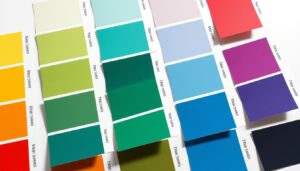
This guide dives into Tailwind’s extensive default system, which includes 11 steps per shade, from lightest to darkest. Whether you’re working on backgrounds, borders, or text, these utilities ensure seamless integration across your projects.
We’ll explore practical examples, such as using classes like bg-sky-50 to bg-sky-950, and discuss best practices for adjusting opacity and targeting dark mode. By the end, you’ll have the tools to improve design consistency and speed up your workflow.
Key Takeaways
- Tailwind’s default system includes 11 shades per color, ensuring design consistency.
- Color utilities support backgrounds, borders, text, and more for seamless integration.
- Practical examples like bg-sky-50 to bg-sky-950 make implementation straightforward.
- Adjusting opacity and targeting dark mode are simplified with Tailwind’s tools.
- This guide helps improve design harmony and speeds up development.
Introduction to Tailwind CSS Colors
Colors are more than just visual elements; they shape how users interact with a site. A well-chosen palette enhances user experience, evokes emotions, and ensures consistency across a project. This is where the framework’s approach to color management shines.
Why Colors Matter in Web Design
Picking the right color is key to web design excellence. It influences readability, accessibility, and overall visual impact. For instance, semantic names like “primary” or “danger” make it easier to understand the purpose of each hue.
Using a structured system ensures that every element aligns with the theme. This not only improves aesthetics but also speeds up the design process. Developers can focus on functionality while maintaining a cohesive look.
An Overview of the Tailwind Approach
The framework simplifies design by offering a rich, preset collection of colors and utilities. Instead of generic names, it uses semantic names that reflect their purpose. This makes future modifications straightforward and intuitive.
Developers can easily override defaults or extend the palette to meet unique requirements. By linking semantic meaning with color, the system ensures consistency across projects. This approach is both flexible and efficient.
| Feature | Benefit |
|---|---|
| Semantic Names | Eases understanding and future modifications |
| Custom Configurations | Allows for unique design requirements |
| Preset Collection | Speeds up the design process |
Combining default utilities with custom configurations ensures that every project meets its specific needs. This balance of structure and flexibility is what makes the framework a powerful tool for developers.
Understanding tailwind css colors Utilities
Effective design relies heavily on the strategic use of color utilities. These tools allow developers to apply consistent and visually appealing styles across various properties. From backgrounds to borders, mastering these utilities ensures a seamless design process.
Using Color Utilities Across Properties
Color utilities are versatile and can be applied to multiple elements. For instance, bg-white sets a white background, while border-pink-300 adds a light pink border. Text colors, like text-gray-950, ensure readability and contrast.
These utilities simplify the process of maintaining a cohesive look across a project. Developers can quickly prototype designs without manually defining styles. This speeds up development and ensures consistency.
Adjusting Opacity and Implementing Dark Mode
Opacity adjustments are straightforward with Tailwind’s syntax. For example, bg-sky-500/75 sets a sky blue background with 75% opacity. This flexibility allows for subtle design tweaks that enhance user experience.
Dark mode is equally intuitive. Classes like dark:bg-gray-800 automatically switch to dark themes when enabled. This ensures accessibility and adaptability across different user preferences.
| Utility | Application |
|---|---|
| bg-white | Sets a white background |
| border-pink-300 | Adds a light pink border |
| text-gray-950 | Ensures high-contrast text |
| bg-sky-500/75 | Adjusts background opacity |
| dark:bg-gray-800 | Enables dark mode styling |
Understanding these utilities is crucial for building accessible and dynamic interfaces. Whether working on a default color palette or adding custom color variations, these tools streamline the design process. They ensure that every project meets its specific needs while maintaining visual harmony.
Customizing and Extending Your Color Palette
Tailwind’s default palette is powerful, but customization unlocks endless possibilities. By tailoring your palette, you can create designs that align perfectly with your project’s unique requirements. This section explores how to extend, override, and optimize your palette for maximum efficiency.
Using Custom Colors and Palettes
To add custom shades, modify the `tailwind.config.js` file. This file allows you to extend the default palette or introduce entirely new color names. For example, you can add a brand-specific hue like this:
module.exports = {
theme: {
extend: {
colors: {
‘brand-blue’: ‘#1E90FF’,
},
},
},
}
Using CSS variables is another effective method. Define your custom shades in your stylesheet and reference them in your class definitions. This approach ensures consistency and simplifies future updates.
Overriding and Disabling Default Colors
Sometimes, the default palette includes unused shades that bloat your CSS. To disable default color values, use the `corePlugins` option in your configuration file. For instance:
module.exports = {
corePlugins: {
colors: false,
},
}
This removes all default shades, allowing you to build a leaner stylesheet. You can then reintroduce only the shades you need using custom configurations.
Descriptive class names like `bg-brand-blue` or `text-accent-red` make your code easier to maintain. Consistent naming conventions ensure that your team can quickly understand and modify the palette as needed.
| Action | Method |
|---|---|
| Add Custom Colors | Modify `tailwind.config.js` |
| Use CSS Variables | Define in stylesheet, reference in classes |
| Disable Defaults | Use `corePlugins` option |
| Optimize Naming | Use descriptive class names |
Organizing your file structure and maintaining clear naming practices are essential for efficient customization. By leveraging these techniques, you can create a palette that enhances your design while keeping your workflow streamlined.
Implementing Semantic Colors in Tailwind
Semantic colors bring meaning and purpose to design systems, making them easier to manage and scale. Unlike literal color names like “red” or “blue,” semantic names like “error” or “brand” provide context. This approach ensures consistency and adaptability across projects.
What Are Semantic Colors?
Semantic colors are named based on their purpose rather than their appearance. For example, a “danger” color might be red, but its name reflects its role in the design. This makes it easier to understand and modify the palette later.
Literal names, like “pink-300,” describe the shade directly. While useful, they lack the flexibility of semantic names. Contextual names improve scalability and simplify re-theming.
Benefits of a Semantic Naming System
A semantic naming system supports consistent and adaptable design systems. For instance, using bg-error-primary or text-brand-onprimary ensures clarity and maintainability.
This approach also enhances collaboration. Developers and designers can quickly understand the purpose of each color. It reduces confusion and speeds up the design process.
Defining Global and Alias Colors
Global colors are used across the entire project, while alias colors are specific to certain components. For example, a global color might be “primary,” while an alias could be “button-primary.”
To add semantic colors, modify the config file. Use the extend feature to introduce new shades. Here’s an example:
module.exports = {
theme: {
extend: {
colors: {
‘error’: ‘#FF0000’,
‘brand’: ‘#1E90FF’,
},
},
},
}
Proper documentation is essential. Clearly define each color’s role and usage in your theme documentation. This ensures consistency and makes future updates easier.
| Type | Description |
|---|---|
| Global Colors | Used across the entire project |
| Alias Colors | Specific to certain components |
| Semantic Names | Reflect purpose, not appearance |
| Literal Names | Describe the shade directly |
By leveraging semantic colors, you can create a more maintainable and scalable design system. This approach ensures clarity and consistency, making your projects easier to manage.
Tips and Best Practices for Tailwind CSS Colors
A well-organized color system is the backbone of any successful design project. By integrating theme documentation and custom configurations, you can ensure consistency and scalability. This section provides actionable tips to streamline your workflow and enhance your design process.
Integrating Theme Documentation and Custom Configurations
Clear theme documentation is essential for harmonizing design and development. It ensures that everyone on the team understands the purpose and usage of each color value. Documenting your palette helps maintain consistency across projects.
Custom configurations allow you to extend or override default settings. Use the `tailwind.config.js` file to add new shades or modify existing ones. This flexibility ensures your palette aligns with your project’s unique needs.
Efficiently Organizing Your Color Variables
Organizing color variables effectively is key to a maintainable design system. Use descriptive names like `primary` or `accent` to reflect their purpose. This approach simplifies updates and ensures clarity.
Leverage Tailwind’s function and syntax to manage variables efficiently. For example, use `bg-brand-blue` or `text-error-red` to apply custom shades. This method keeps your code clean and easy to understand.
| Strategy | Benefit |
|---|---|
| Clear Documentation | Ensures team alignment and consistency |
| Custom Configurations | Tailors the palette to project needs |
| Descriptive Names | Simplifies maintenance and updates |
| Tailwind Functions | Streamlines variable management |
Balancing the scale of your palette is crucial for responsive design. Ensure your colors adapt seamlessly across devices and themes. This approach enhances user experience and accessibility.
Structuring your configurations in `tailwind.config.js` supports future modifications. Keep your file organized and well-documented to simplify updates. This practice ensures your design system remains flexible and scalable.
Conclusion
Mastering a structured color system is essential for creating visually appealing and consistent designs. This guide has explored the importance of understanding utilities, customizing palettes, and implementing semantic names like teal and orange for clarity.
A well-organized color system speeds up development and ensures a cohesive design experience. By experimenting with both default and custom configurations, developers can optimize their projects effectively.
This guide provides practical examples and best practices to help you achieve cleaner, more maintainable code. Integrating these strategies leads to a better end-user experience and more efficient workflows.
Use this list of tips to enhance your design process. Whether you’re working with teal accents or orange highlights, a thoughtful approach ensures success. Explore and experiment to make the most of your design system.
